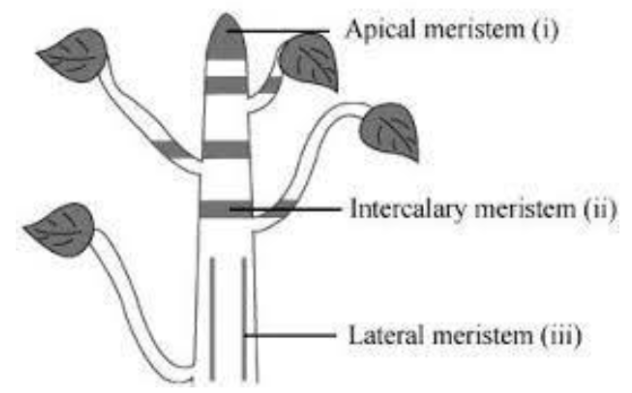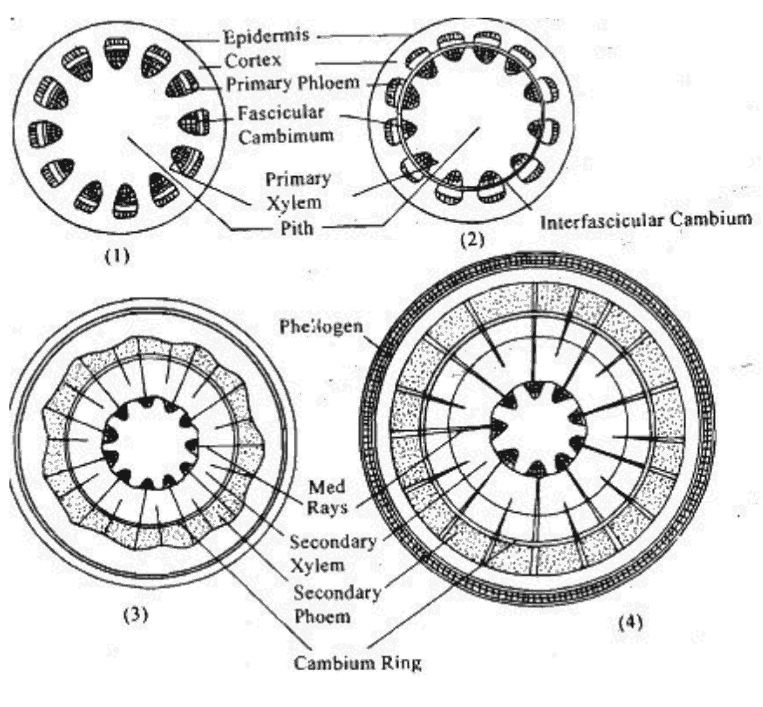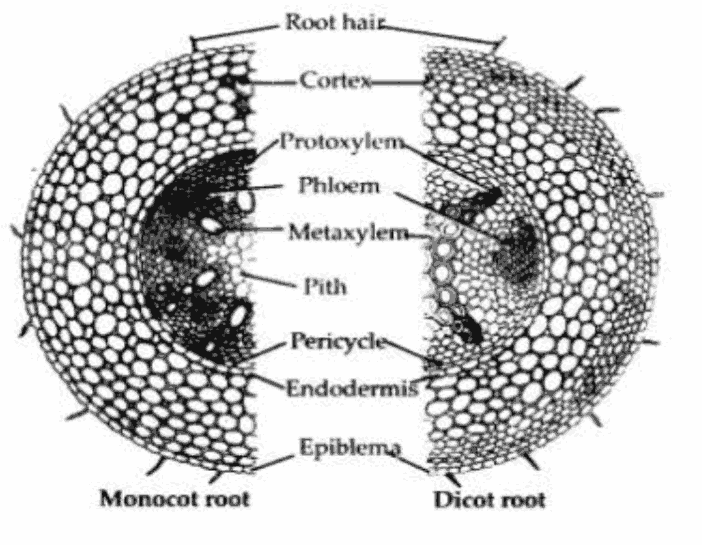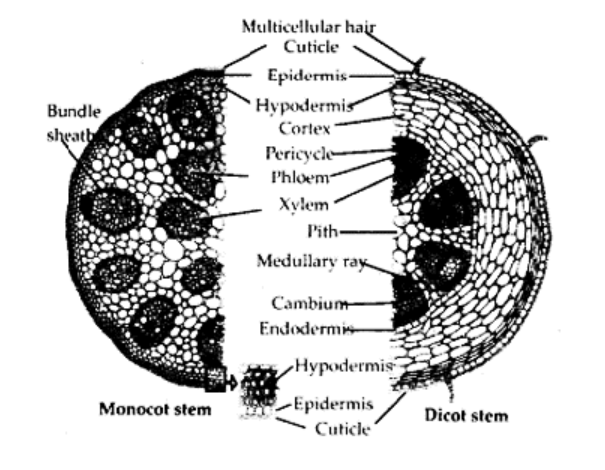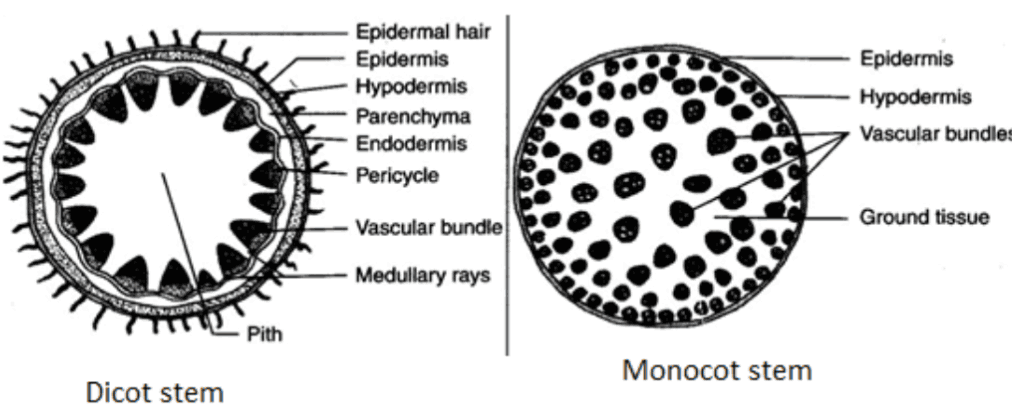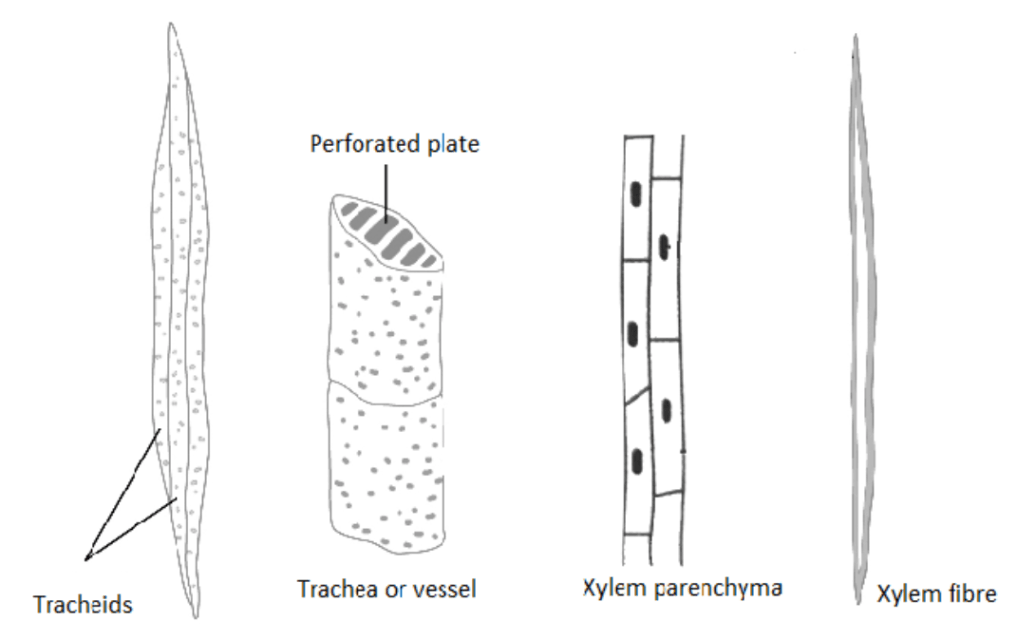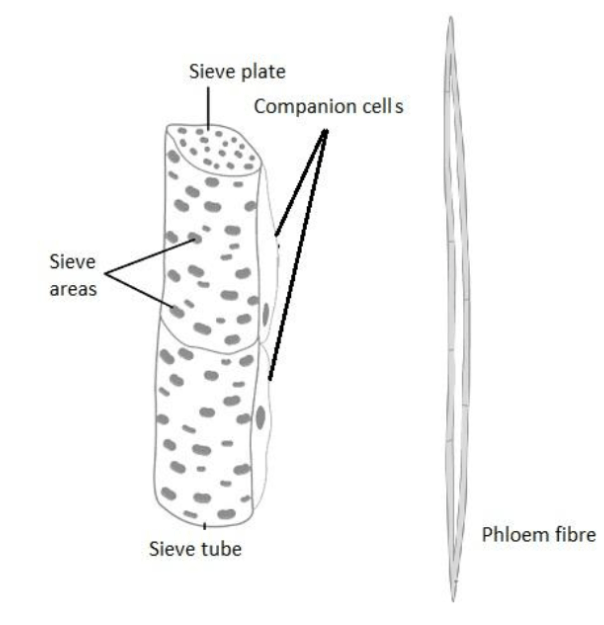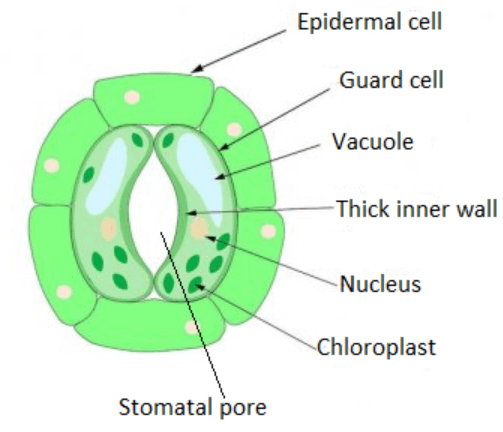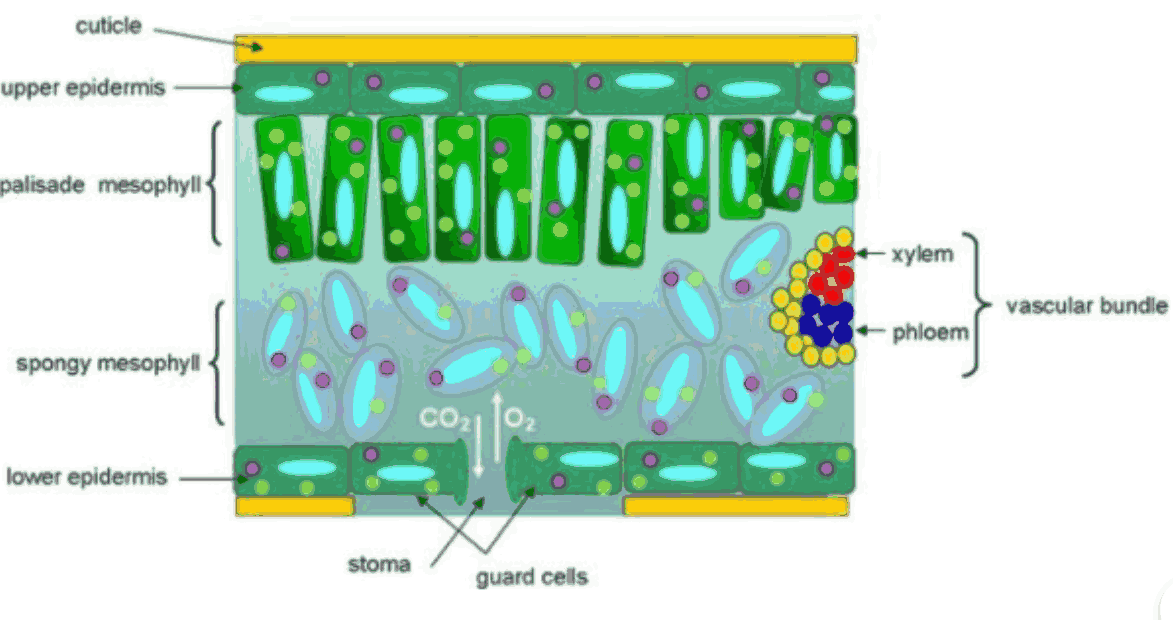Class 11 Biology Chapter 6 Questions And Answers With Complete Solutions
FAQs on NCERT Solutions For Class 11 Biology Chapter 6 Anatomy of Flowering Plants (2025-26)
1. What are NCERT Solutions for Class 11 Biology Chapter 6 – Anatomy of Flowering Plants?
NCERT Solutions for Class 11 Biology Chapter 6 provide stepwise answers to all textbook exercises as per the CBSE 2025–26 syllabus. They help students understand core concepts like plant tissues, secondary growth, and anatomical differences between monocots and dicots, following the NCERT methodology for exam preparation.
2. How are meristematic tissues classified in NCERT Class 11 Biology Chapter 6 Solutions?
According to NCERT Solutions, meristematic tissues are classified based on their location in the plant body into:
- Apical meristems (at root/shoot tips; increase length)
- Intercalary meristems (at leaf base/above nodes; elongate organs)
- Lateral meristems (on sides; increase girth/diameter)
3. Why are xylem and phloem called complex tissues in CBSE Class 11 Biology NCERT Solutions?
Xylem and phloem are called complex tissues because each is composed of multiple cell types working together for specific functions. Xylem transports water and minerals, while phloem translocates food. Their components include vessels, tracheids, fibers, and parenchyma (in xylem), as well as sieve tubes, companion cells, fibers, and parenchyma (in phloem).
4. What is the significance of secondary growth according to Class 11 Biology Chapter 6 NCERT Solutions?
Secondary growth, mainly found in dicot stems and roots, increases the girth of plants. This provides structural support, replaces old vascular tissue, and forms a protective corky layer (periderm), thereby safeguarding against pathogens, mechanical injury, and environmental stress, as explained in the official NCERT Solutions.
5. How can you distinguish between a monocot stem and a dicot stem using NCERT Solutions for Class 11 Biology Chapter 6?
The NCERT Solutions guide students to identify:
- Monocot stem: Vascular bundles are scattered, usually have bundle sheaths, phloem parenchyma is absent, and hypodermis is sclerenchymatous.
- Dicot stem: Vascular bundles arranged in a ring, open and collateral, bundle sheath absent, phloem parenchyma present, and hypodermis is collenchymatous.
6. Explain the structure and function of stomatal apparatus as per the NCERT Solutions for Anatomy of Flowering Plants.
The stomatal apparatus consists of a stomatal pore, two guard cells that control its opening and closing, and sometimes subsidiary cells. Its function is to regulate gas exchange and transpiration; guard cells’ turgidity causes aperture changes, enabling control over water loss and CO2 intake.
7. What role do periderm and cork cambium play in dicot stems, based on Class 11 Biology NCERT Solutions?
Periderm is the protective tissue that replaces the ruptured epidermis in older stems. The cork cambium (phellogen) generates cork (phellem) to the outside and phelloderm inside—together, these form the periderm, which prevents water loss and protects against physical damage and pathogens.
8. What are three tissue systems in flowering plants highlighted in Chapter 6 of NCERT Solutions for Class 11 Biology?
NCERT Solutions detail the three main tissue systems:
- Epidermal tissue system: Outer protective covering (epidermis, trichomes, root hairs)
- Ground tissue system: Cortex, endodermis, pericycle, pith, mesophyll
- Vascular tissue system: Xylem and phloem for transport and support
9. What are common misconceptions about secondary growth clarified in NCERT Solutions for Class 11 Biology Chapter 6?
One misconception is that all plants exhibit secondary growth; NCERT clarifies that significant secondary growth occurs mainly in dicotyledons, rarely in monocots. Another is that primary and secondary tissues are easily distinguishable in mature plants, but continued cambial activity may obscure boundaries over time.
10. How does the NCERT Solutions for Chapter 6 explain the anatomical adaptation of leaves to their environment?
NCERT Solutions highlight that anatomical adaptations like leaf thickness, arrangement of mesophyll (palisade and spongy), cuticle presence, and venation type help plants optimize photosynthesis, reduce water loss, and survive various climates (dorsiventral for dicots, isobilateral for monocots).
11. What is the difference between open and closed vascular bundles as outlined in Class 11 Biology Chapter 6 NCERT Solutions?
Open vascular bundles (in dicot stems) contain a cambium between xylem and phloem, allowing for secondary growth. Closed vascular bundles (in monocots) lack cambium and hence cannot undergo secondary thickening.
12. In what ways do NCERT Solutions for Class 11 Biology Chapter 6 help for board and competitive exam preparation?
These NCERT Solutions provide structured, step-wise answers as per CBSE exam patterns, include marked and labeled diagrams, clarify conceptual foundations, and integrate CBSE/NEET exam themes—helping students master all in-syllabus topics for better scores.
13. What if a plant has no lateral meristem as per CBSE Class 11 Biology NCERT Solutions?
If a plant lacks lateral meristem, it will not show secondary growth; hence, its stem and root girth won’t increase significantly. Such plants—typically monocots—remain slender with limited capacity for increased vascular transport or mechanical support.
14. Why is the study of plant anatomy important according to NCERT Solutions for Anatomy of Flowering Plants?
Studying plant anatomy reveals structural adaptations to different habitats, aids in taxonomy (distinguishing monocots, dicots, gymnosperms), improves crop yield/quality, and helps predict wood strength and suitability for commercial uses.


























